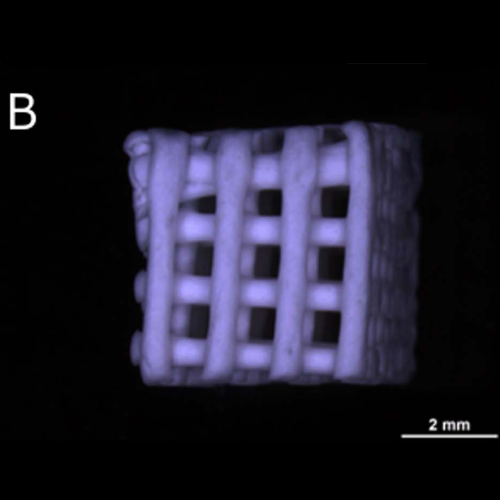A versatile method for combining different biopolymers in a core/shell fashion by 3D plotting to achieve mechanically robust constructs.
Three-dimensional extrusion of two different biomaterials in a core/shell (c/s) fashion has gained much interest in the last couple of years as it allows for fabricating constructs with novel and interesting properties. We now demonstrate that combining high concentrated (16.7 wt%) alginate hydrogels as shell material with low concentrated, soft biopolymer hydrogels as core leads to mechanically stable and robust 3D scaffolds. Alginate, chitosan, gellan gum, gelatin and collagen hydrogels were utilized successfully as core materials-hydrogels which are too soft for 3D plotting of open-porous structures without an additional mechanical support. The respective c/s scaffolds were characterized concerning their morphology, mechanical properties and swelling behavior. It could be shown that core as well as shell part can be loaded with growth factors and that the release depends on core composition and shell thickness. Neither the plotting process nor the crosslinking with 1M CaCl2 denatured the proteins. When core and shell were loaded with different growth factors (VEGF and BMP-2, respectively) a dual release was achieved. Finally, live human endothelial cells were integrated in the core material, demonstrating that this new strategy can be used for bioprinting purposes as well.

- Biofabrication. 2016 Oct 7;8(4):045001.
- 2016
- Medical Biology
- 27716641
- PubMed
Enabled by:
